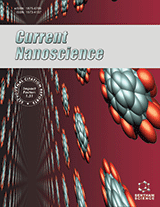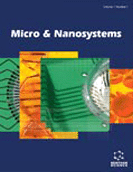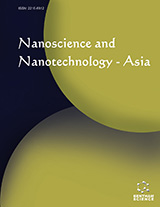Abstract
A modified sol-gel method was applied to prepare 0.3%La-3%In-TiO2 in order to investigate the effect of calcination temperature. The material was investigated by SEM, XRD, and N2 adsorption-desorption methods. The diffraction peaks of the sample are in accordance to the patterns of anatase TiO2. The anatase crystallite sizes are 5.5, 6.3, 11.1, and 15.6 nm for the samples calcinated at 350°C, 400°C, 500°C, and 600°C, respectively. Crystal cell expansion is found when calcination temperature increases from 350°C to 500°C. The increase of average pore size and decrease of pore volume with increasing calcination temperature are found for 0.3%La-3%In-TiO2. The 0.3%La-3%In-TiO2 calcinated at 400°C has satisfactory adsorption capacity and photocatalytic activity. 25.6% of the initial methyl orange can be adsorbed on the material after adsorption-desorption equilibrium. After that, the remaining methyl orange can be fully degraded after 40 min of irradiation.
Keywords: Calcination, In, La, photocatalysis, TiO2.
Graphical Abstract
Current Nanoscience
Title:Effects of Calcination Temperature on Properties of 0.3%La-3%In-TiO2 Photocatalyst Prepared Using Sol-Gel Method
Volume: 11 Issue: 1
Author(s): Wenjie Zhang, Ling Du, Jinlei Chen and Hongbo He
Affiliation:
Keywords: Calcination, In, La, photocatalysis, TiO2.
Abstract: A modified sol-gel method was applied to prepare 0.3%La-3%In-TiO2 in order to investigate the effect of calcination temperature. The material was investigated by SEM, XRD, and N2 adsorption-desorption methods. The diffraction peaks of the sample are in accordance to the patterns of anatase TiO2. The anatase crystallite sizes are 5.5, 6.3, 11.1, and 15.6 nm for the samples calcinated at 350°C, 400°C, 500°C, and 600°C, respectively. Crystal cell expansion is found when calcination temperature increases from 350°C to 500°C. The increase of average pore size and decrease of pore volume with increasing calcination temperature are found for 0.3%La-3%In-TiO2. The 0.3%La-3%In-TiO2 calcinated at 400°C has satisfactory adsorption capacity and photocatalytic activity. 25.6% of the initial methyl orange can be adsorbed on the material after adsorption-desorption equilibrium. After that, the remaining methyl orange can be fully degraded after 40 min of irradiation.
Export Options
About this article
Cite this article as:
Zhang Wenjie, Du Ling, Chen Jinlei and He Hongbo, Effects of Calcination Temperature on Properties of 0.3%La-3%In-TiO2 Photocatalyst Prepared Using Sol-Gel Method, Current Nanoscience 2015; 11 (1) . https://dx.doi.org/10.2174/1573413710666140926225340
| DOI https://dx.doi.org/10.2174/1573413710666140926225340 |
Print ISSN 1573-4137 |
| Publisher Name Bentham Science Publisher |
Online ISSN 1875-6786 |
 11
11 1
1
- Author Guidelines
- Bentham Author Support Services (BASS)
- Graphical Abstracts
- Fabricating and Stating False Information
- Research Misconduct
- Post Publication Discussions and Corrections
- Publishing Ethics and Rectitude
- Increase Visibility of Your Article
- Archiving Policies
- Peer Review Workflow
- Order Your Article Before Print
- Promote Your Article
- Manuscript Transfer Facility
- Editorial Policies
- Allegations from Whistleblowers






















